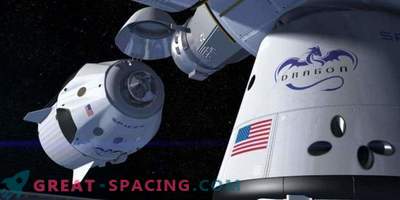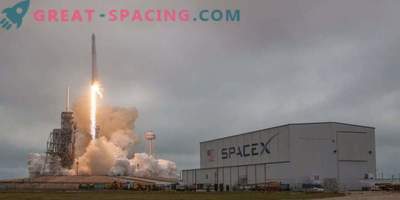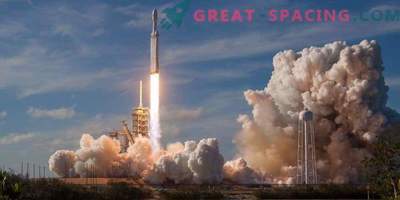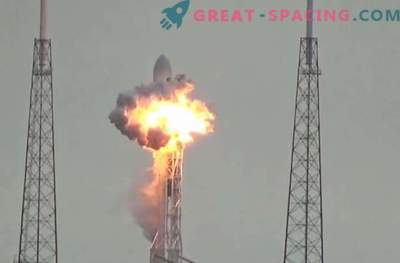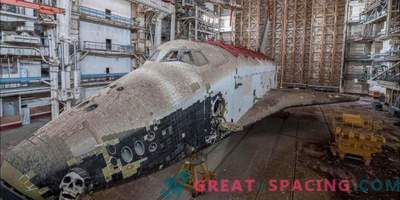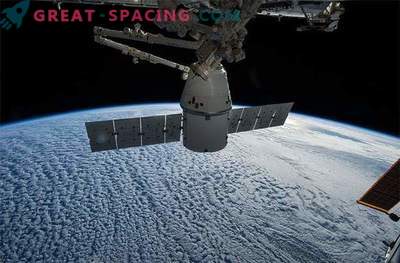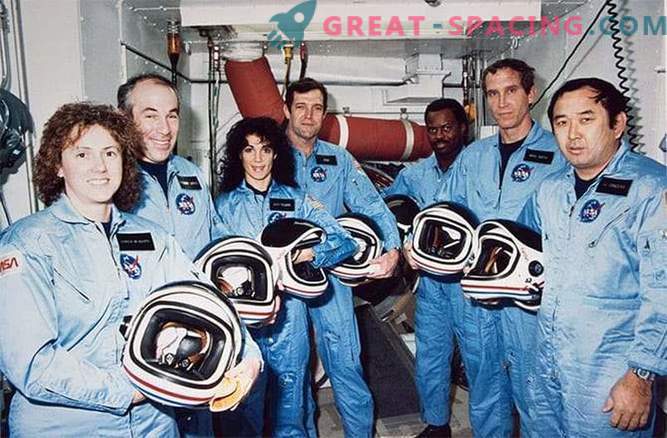
Until January 1986, NASA launched four, regularly taking off, space shuttles that carried out scientific experiments, delivered communication satellites and military spacecraft to orbit, and conducted research in minimal gravity during missions lasting about a week. The US Space Agency denied the two congressmen and the Saudi prince a flight on a shuttle that could not accommodate more than eight people.
The space program of the 25th flight started on January 28, 1986. High school teacher Sharon Christa McAuliffe joined five NASA astronauts and payload specialist Gregory Bruce Jarvis from Hughes Space and Communications, aboard the Space Shuttle Challenger. Their task was to send two satellites, study Halley's comet and conduct a living science lesson from orbit for students.
Pictured from left to right: McAuliffe, Jarvis, flight engineer Judith Resnick, commander Francis Richard Scobie, science specialist Ronald McNair, pilot Michael Smith and science specialist Ellison Onizuka, during preparatory training in Florida, January 9, 1986.
Teacher in Space
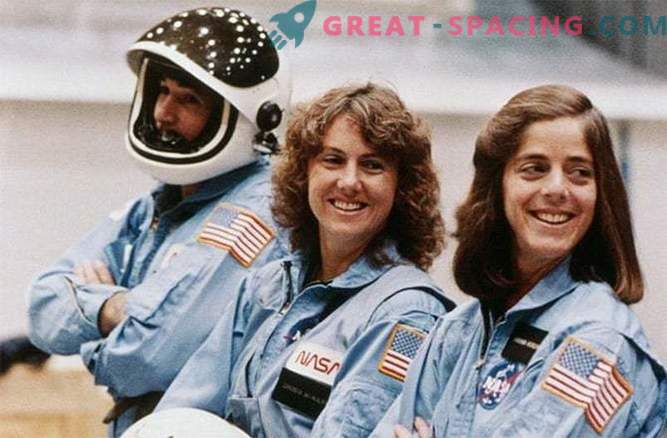
In the center is a New Hampshire school teacher Krista McAuliffe, on the right is her understudy from Idaho, Barbara Morgan. They were chosen from more than eleven thousand applicants to prepare for space flight, within the framework of the educational propaganda program “Teacher in Space”. NASA wanted to increase the popularity of space shuttles, demonstrating how an ordinary person can fly into space.
Frozen warning
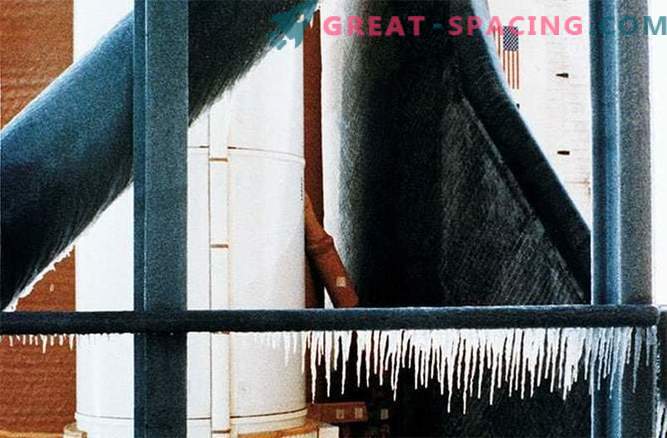
On the morning of January 28, 1986 at the Kennedy Space Center, the air temperature was slightly below zero. This caused some concerns about how the solid rocket boosters of the shuttle will behave. Two accelerators attached to an orange-colored external fuel tank operate for the first two minutes of the flight, and then disconnect. The three main engines of the shuttle, working on liquid fuel, continue to work for another 6, 5 minutes to bring the spacecraft into orbit. Security engineering problems never reached the launch managers of NASA, who gave the command to start Challenger at 11:38 EST. Icicles on the launch complex are captured here.
Destruction
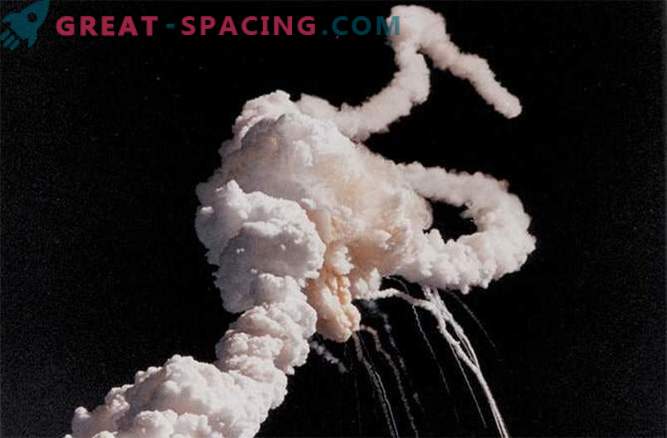
The flight did not last long. Events developed rapidly, it all began with the advent of a stream of gray smoke from the attached right-wing solid-fuel rocket shuttle, less than a second after the launch. Eight dark streams of smoke appeared in the next 2.5 seconds.
After 37 seconds of flight, the Challenger encounters a series of high-altitude differences in air pressure, which the steering system of accelerators automatically compensates for. After passing through the area of maximum aerodynamic pressure, the main engines of the shuttle began to warm up and boosters increased their thrust when on the right-hand solid-fuel rocket flames appeared in the aft mounting joint.
After a minute of flight, a plume of flame appeared, and the right accelerator began to lose pressure, indicating an increasing leakage. After 64, 6 seconds after launch, the fire broke the shuttle’s fuel tank, creating drastic changes in the shape and color of the flame. Hydrogen leakage followed by burning brought the end of the flight closer. After about 72.2 seconds, the lower strut, which holds the right amplifier to the tank, pulled away, leaving it to rotate freely around the upper rack. A second later, the tank began to fall apart, releasing a large amount of liquid hydrogen. At this time, the rotating accelerator hit the tank, releasing more hydrogen, as well as liquid oxygen. Challenger, flying a little less than two times faster than the speed of sound at an altitude of 46 thousand feet, very quickly fell. The orbiter collapsed, its main engines were still working, 73 seconds after launch.
Chip

A piece of debris that reached from the Atlantic Ocean indicates the location of the ignition of the shuttle accelerator.
O-ring

NASA quickly determined that the rubber O-ring depicted here on the right shuttle accelerator rocket broke, firing burning gases. A presidential commission appointed to investigate the accident found that cold weather was the deciding factor.
Buried Spaceship
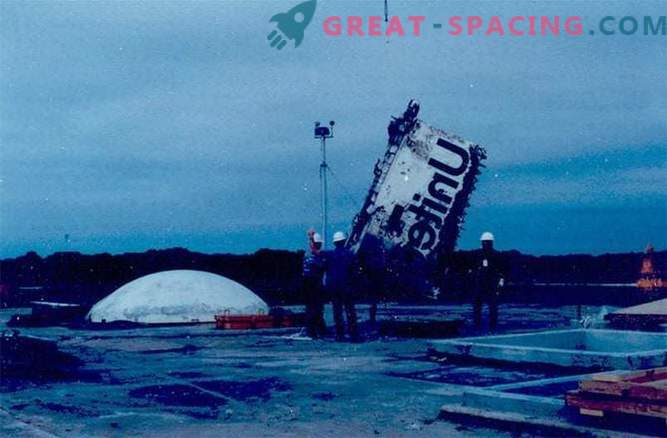
After the accident investigation was completed, the recovered debris was buried in two abandoned missile mines at Cape Canaveral air force station, just south of the Kennedy Space Center.
Test Team
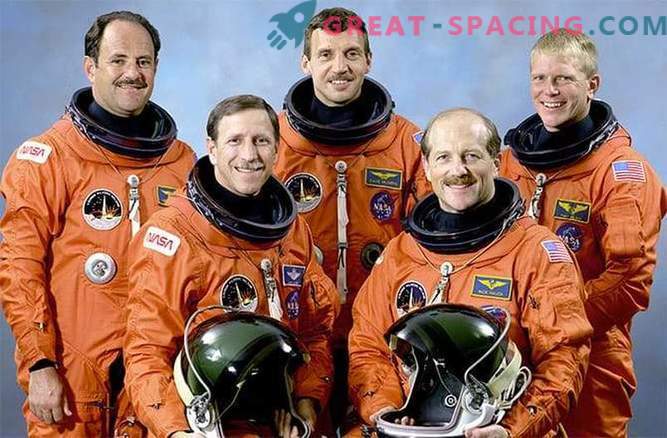
It took more than 2, 5 years before NASA prepared to launch the shuttle again. In addition to reconstructing the parts of the accelerator, the agency made hundreds of changes to the engine, brakes and other equipment of the shuttle, improved the software and transformed the controls and operations to ensure safety. NASA has appointed its first Apollo 11 veteran crew for the return mission. Pictured in NASA costumes (mandatory after Challenger) STS-26 astronauts: at the bottom right commander Frederick Hawke, below right pilot Richard Covey, below left and above in line left, scientists John Michael Lounge, David Hilmers and George “Pinky” Nelson.
Back to space
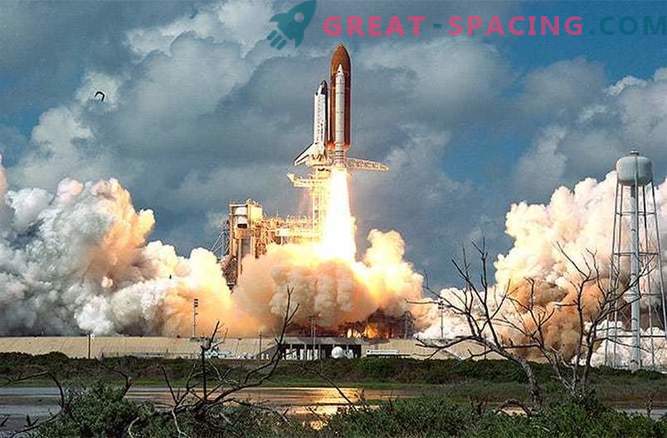
NASA is committed to launching the Discovery Space Shuttle, which was considered a test after the launch of the Challenger. The main goal was to replace the NASA communications satellite lost during the Challenger launch. During the mission, which started on September 29, 1988, the Discovery team saluted the astronauts of the Challenger. “We continued the journey. Dear friends, this loss made it possible to start a new study, ”the team said on the radio during the flight. Improved Discovery boosters showed no gas leakage or overheating.
Teacher who became an astronaut

NASA will never forget about the teacher's program in space, although it did not allow the flight on the shuttle to anyone other than professional astronauts. The agency allowed the astronaut and former senator John Glenn, as a senior health officer of the mission, to fly one-time to Mercury 7, which allowed the doubler Christa McAuliff Barbara Morgan to fly. Morgan joined astronauts in 1998 and began training as a science specialist. The shuttle program sustained the second fatal incident on February 1, 2003, and the flights were suspended for 2, 5 years. Dissatisfied with the loss of Columbia, the United States decided to stop the shuttle program, after NASA built the space station. Morgan flew on the fifth mission after the collapse of Colombia, having started on board the shuttle Endevour on August 8, 2007.
Lesson learned
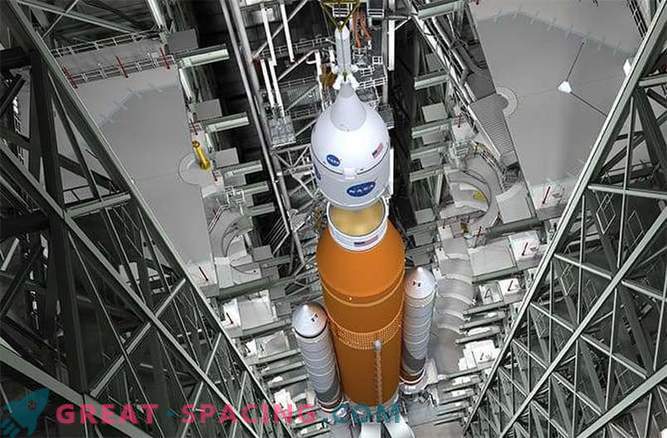
The main lesson learned during the Challenger crash is that astronauts need an emergency evacuation system in case of a bad launch, the most dangerous part of the space mission. NASA has returned to constructing a capsule for the next manned space flight, called Orion, which will be installed on the rocket of the System Space Launch. In the event of an emergency on the launch pad or in orbit, Orion will have its own rocket system that can lead the unit away from the faulty amplifier. Image of Orion at the top of the rocket Space Launch Systems.
Commercial Missiles
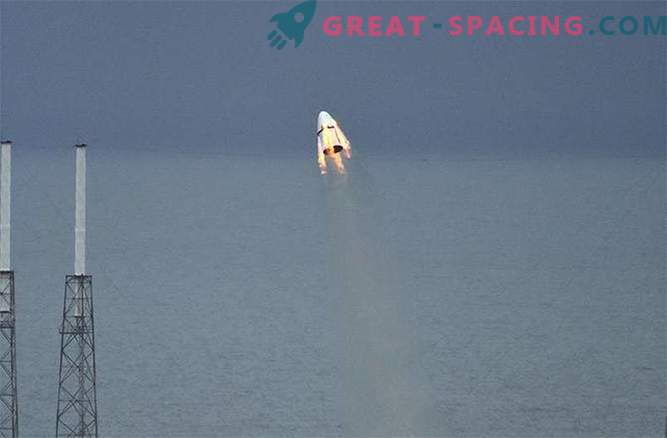
NASA and other government agencies now do not have a monopoly on human space flight. The suborbital spacecraft SpaceShipOne, built by a private firm, made three flights from the atmosphere in 2004 and laid the foundation for space passenger traffic under the auspices of Virgin Galaxies. Meanwhile, SpaceX and Boeing are preparing a commercial passenger taxi by hiring NASA flight crews from the International Space Station. Like the NASA-Orion capsule, which is designed to go outside the station, the CST-100 Starline Boeing and SpaceX Dragon, shown here, will be able to send itself to a safe area in case of an emergency. SpaceX tested its launch system in May 2015.
